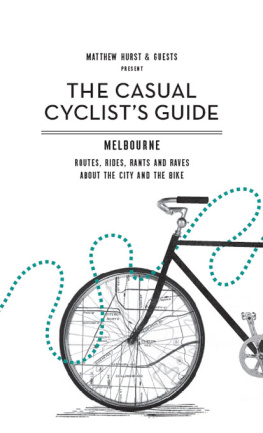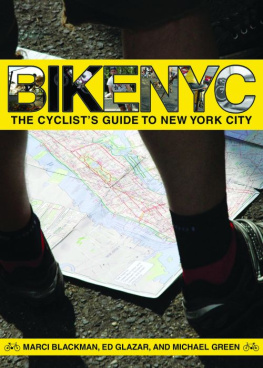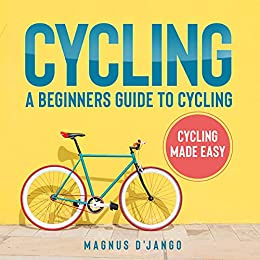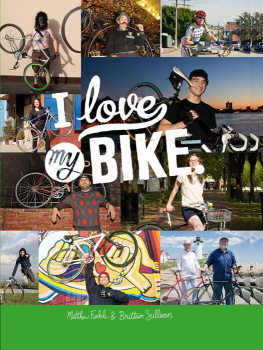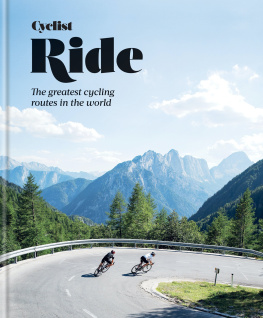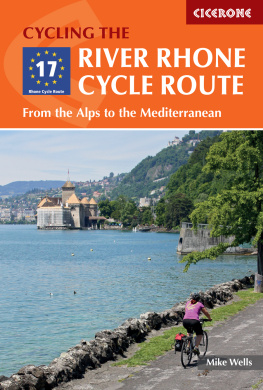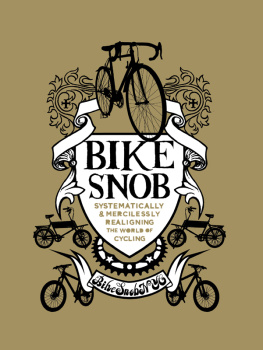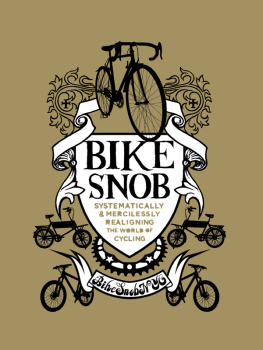


An SBS Book
Published in 2011 by Hardie Grant Books
Hardie Grant Books (Australia)
Ground Floor, Building 1
658 Church Street, Richmond, Victoria 3121
www.hardiegrant.com.au
Hardie Grant Books (UK)
Dudley House, North Suite
3435 Southampton Street, London WC2E 7HF
www.hardiegrant.co.uk
All rights reserved. No part of this publication may be reproduced, stored in a retrieval system or transmitted in any form by any means, electronic, mechanical, photocopying, recording or otherwise, without the prior written permission of the publishers and copyright holders.
The moral rights of the author have been asserted.
Copyright Matthew Hurst 2011
National Library of Australia Cataloguing-in-Publication Data:
EISBN: 9781742737706
CyclingVictoria Melbourne Guidebooks
Bicycle touringVictoria Melbourne Guidebooks
Bicycle trailsVictoria Melbourne Guidebooks
796.64099451
Design and layout Studio Pip and Co.
Cover image Studio Pip and Co. and Sarah Furzer
Section opener illustrations Tin & Ed
Map drawing and design Matthew Hurst
Archival material State Library of Victoria
Welcome. Melbourne is a long way from anywhere else.
Thank God its a wonderful place to be.
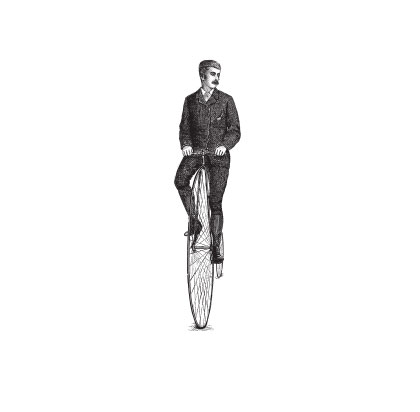
CONTENTS
Classic Melbourne rides
Art galleries and museums
Architecture, design and urban life
Drinking and dining
Shopping
Nightclubbing

As little as 150 years ago, the mobility of humans on land was reliant on either a horse, or the human themselves. Independent, individual transportation was the realm of inventors: a desirable, if somewhat fanciful prospect. Alternative transportation by bikea seat on a frame with two wheels propelled by an individual to achieve a continual rolling balancewas still considered a dream, or at least a goal. The bicycle was an exciting and innovative prospect.
A century and a half on, people still get a kick out of the bicycles fundamental premisethe ability to get where you want to go, no petrol, no power, no engine, no oil: just you and the bike.
When riding, the simple just-me-and-the-bike feeling is part of what makes it so satisfying. A concept of such simple technology feels almost natural. Yes, there are $10,000 carbon frames that are the product of advanced technology, but ultimately the bike is still a bike, and despite the many transport advancements since its creation, it remains an ever-popular and increasingly logical choice.
In the 1950s futurists predicted the twenty-first-century man would be transported by jet packs, flying robots or telekinesis. In the 1980s Back to the Future predicted hover-boards and trash-fuelled cars. If the former were to ever become a viable device for mass production, its the skateboard that may have something to worry about. If the latter came to fruition, perhaps it would reinvigorate the automobile industry. But unless they start flying and become immune to traffic, automotive technology wont render the bike obsolete.
In the golden era of the automobile, signs may have indicated that the bicycle was indeed on its way to joining the list of casualties of technological advancement. The popularity of cycling as a mode of transport indeed suffered decades of decline as post-war economies delivered cars for the masses. But today, more than ever, its apparent that the bicycle is far from approaching obsolescence. So much so that todays futurists, urban planners, governments and think tanks are looking to the bike as transport of the future.
Unlike fifty years ago, it now seems entirely feasible that our children will be using a bike to get to school in 2050. Cities like Melbourne, Sydney, London and New York are spending millions of dollars retrofitting bicycle infrastructure into their landscape. Everyone from experts on mobility through to citizens with common sense are calling for urban centres to be more pedestrian, bike and public transport centric. And while congestion is one of the most pressing issues in cities, global warming is an even bigger concern for the planet. These are symptoms of a world in which one person drives a 2-tonne vehicle for personal day-to-day transportation. The bicycle is the individuals answer to bothfast, economical transportation that comes with the added bonus of burning calories rather than fossil fuels to get you where youre going.
All of this aside, the only reason youll ever need to choose a bike as your transport of choice in the city is because it is the most enjoyable and engaging way to go. The city and the bikethey were made for each other.
Its no secret that Melbourne is a particularly great city to ride around. Contrary to popular belief, there are hills to climb and occasional idiots behind the wheelbut for the most part topography isnt prohibitive, drivers are accommodating or at least tolerant, and between home, work, school and the wealth of places worth spending your precious time in between, theres always somewhere worth riding to.
From the banks of the Yarra to the endless shoreline of Port Phillip Bay, the city provides some genuinely attractive options for setting out on two wheels. But of course what makes a city truly compelling is its built environs, and the things citizens can do in and around them. So along with sharing some of the citys more classic, scenery-driven rides, the suggested routes at the heart of this book are all about using the bike to explore the elements of Melbourne that really make this city what it is.
This book is about the city and the bike; an ode to using one to enjoy the other. It is a guide to exploring the city rather than the depths of physical endurance or personal bests. It is about how to enjoy the commute, rather than approaching the commute as a sport.
Of course personal fitness is important, but this book is about the fitness gained from being active on your way to somewhere elsenot riding just for fitness itself. It would be fair to say that by other books standards, pretty much every ride featured would be graded easy.
Equal parts history, anecdote, observation and suggestion, this book can be an entertaining read on the couch, or take it on the road as a useful guide. The Casual Cyclists Melbourne is an extension of the quarterly map and guide Melbourne for Visitors and Casual Cyclists, which I began producing soon after opening a vintage-bike rental service The Humble Vintage in the spring of 2009. I saw visitors unfolding maps that were either clinically-thorough reproductions of street directories, or the pay-for-entry maps that sit in countless spots around the city, and wanted to produce a genuinely useful sheet with suggestions for enjoying the city by bike. The maps have been well received by locals as much as visitors, and led to this opportunity to produce something larger than their humble A3 form.
Next page
